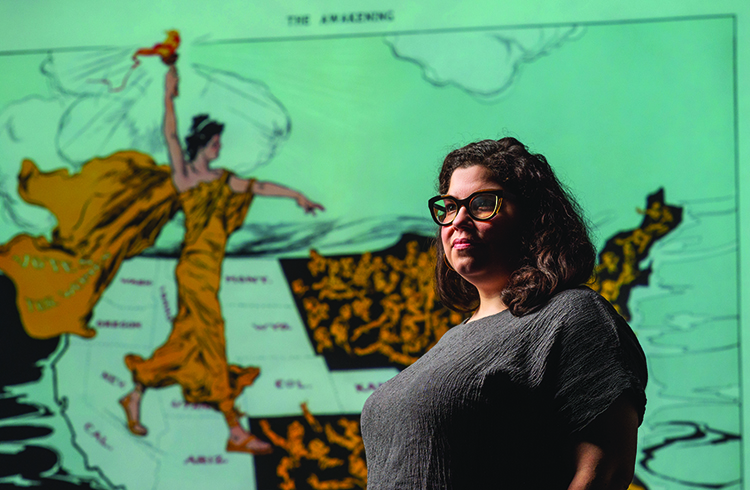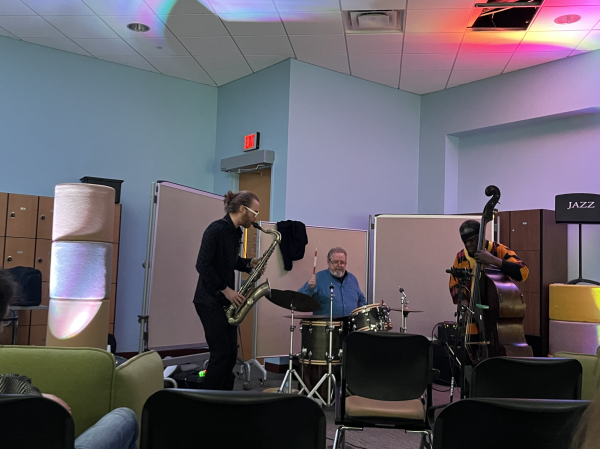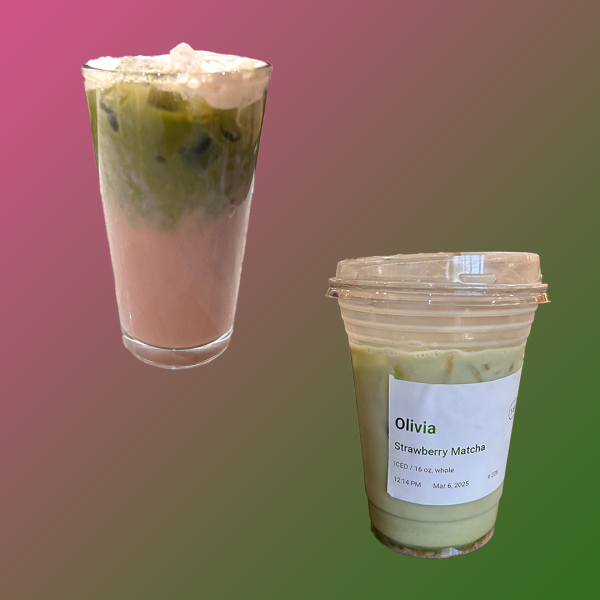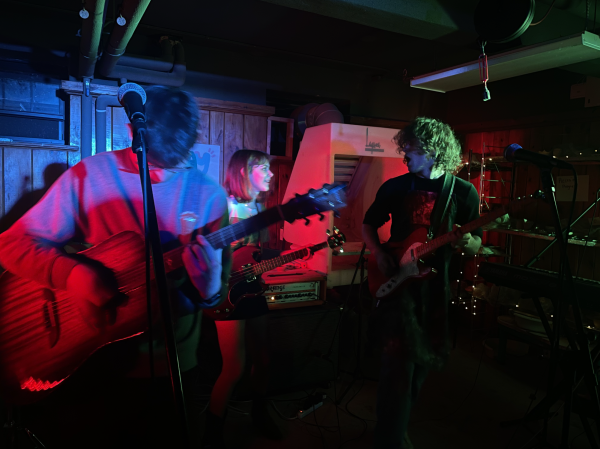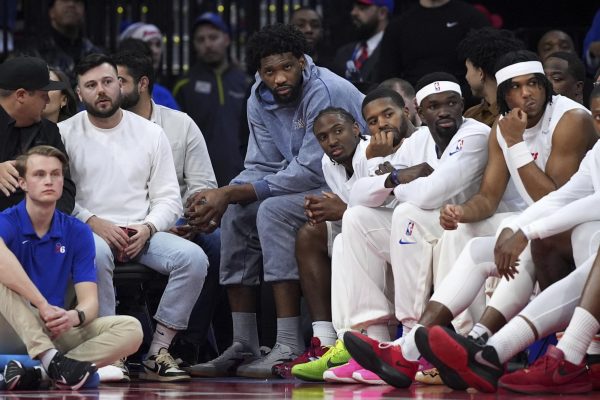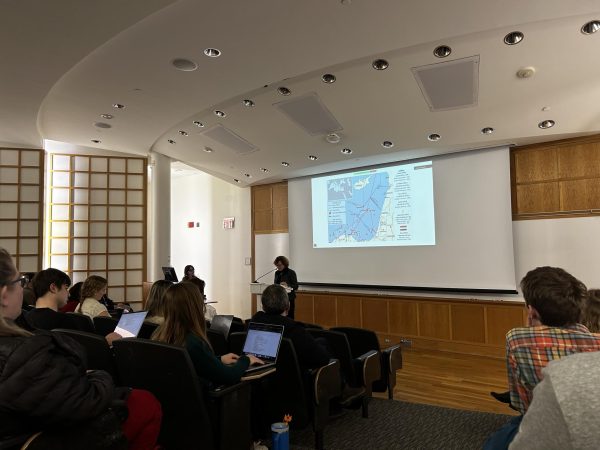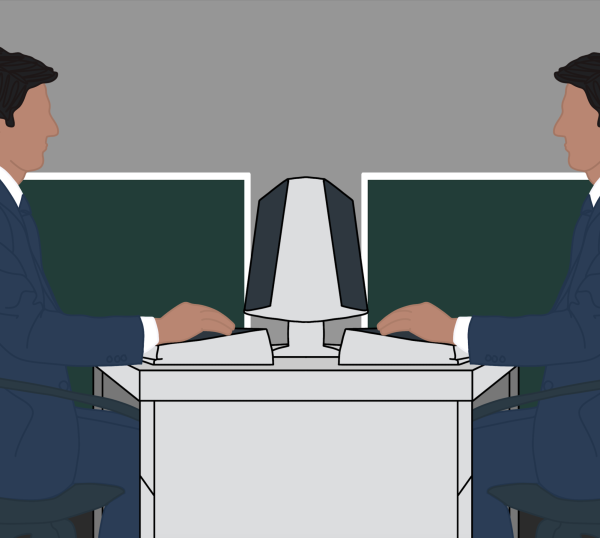Museum Conversations: Documenting the Pandemic
Mark DiOrio | Colgate University
Monica Mercado, Assistant Professor of History, stands with a projection of The Awakening, an image of Lady Liberty about women’s suffrage by Henry Mayer, November 6, 2020.
Colgate students and faculty gathered for another “Museum Conversations” event on Wednesday, Feb. 17 with this week’s focus being the role of museums in documenting and communicating the ongoing pandemic. The discussion was led by Assistant Professor of History Monica Mercado.
Before delving into the heart of her presentation, Mercado provided some clarification as to what “public history” and “rapid response collecting” are. She explained that public history has no universally accepted definition and is a broad, fluid term that encompasses the identification, interpretation and presentation of history. In short, public history is an interactive process between the historian, public, sites and objects. History and memory are important in our everyday lives, so there is a shared interest in connecting the past and present in multiple modalities that go beyond the walls of a museum. Historians must engage with audiences, mediate knowledge and public needs and confront their own role in deciding whose history to preserve. Historians must also know how to talk about controversial histories and how to make history meaningful to the public. She went on to describe the role of “rapid response collecting” in public history, and remarked that this term is a recent addition to museum vernacular but an age-old mission. It is the time-sensitive process of securing objects before they are lost or destroyed, such as protest signs and memorial objects.
Mercado described several precedents that have laid the foundation for museums’ responses to COVID-19, such as Black Lives Matter protests, women’s marches and the 9/11 attacks and aftermath. Mercado spoke at particular length about museums’ responses to 9/11 because she had been working at the Museum of the City of New York for just two months when the Twin Towers fell. She recalled the pressure to act quickly and gather artifacts from the rubble and memorial sites. However, museums had to be sensitive. Gathering shrines left by mourners, or discarded search and rescue material could be seen as coarsely turning objects of grief into mere artifacts. Rapid response collecting is characteristic for toeing the line between documenting and experiencing history as it unfolds. Mercado described the scramble among museums to figure out how they could preserve and share the history that had left many of them shocked and grieving.
“New Yorkers were asking their museums for help. Our neighbors in East Harlem, folks from around the city who were making small shrines and lighting small candles on their stoops, corners in Union Square Park, et cetera. We got calls from other museums in New York, in D.C. What were we doing? Did we need to start collecting or thinking about collecting? Was everyone okay, present and accounted for?” Mercado said. “Everything you now see in the September 11 Memorial & Museum, the Smithsonian, the city museums and museums around the country from New York documenting 9/11 emerged out of an in-person meeting of curators and other museum staff in our basement auditorium in early October 2001. We didn’t have the phrase ‘rapid response’ yet, but we had the mission.”
However, the nature of the coronavirus pandemic makes it difficult to base current collection practices on precedents like 9/11. The highly contagious virus has rendered fieldwork dangerous and nearly impossible. Because of the pandemic, many museums are shutting down and losing staff and funds, forcing them to be particular in what they choose to preserve, as collecting and storing items like face masks or signs uses up scarce, valuable resources. Since people are mostly confined to their homes and the digital realm, there is even a scarcity of objects to be collected. Museums cherish the donation of personal items like diaries or photographs, but there have been objections to such practices. Eira Tansey, who wrote an article railing against museums for urging people to record and donate their lives during a time of such upheaval due to the pandemic, politics and social injustice. This perspective brings up critical questions for museums and individuals as the collective memory of this era is continually forged.
During the culminating question and answer session, Associate Professor of History Alexander Karn brought up a particularly sobering prospect. He said that the rapid response collection framework assumes that there is a rush to collect items before a historical event ends, but how do we know when that end comes, if at all?
“To scramble quickly to save and preserve there is an imperative there, which of course I get, but an event like 9/11 has not ended, exactly. There were one-year, five-year, ten-year commemorations. It is still part of our public discourse. In conversations about [COVID-19] death tolls, we still hear comparisons to single-day figures from 9/11, so I’m just wondering about ways to supplement these rapid response initiatives with something that is sustainable and oriented toward understanding, preserving, collecting what you can call the ‘afterlife’ or ongoing aspects of these events,” Karn said.
Karn’s comment is a reminder that although there is hope for normal life to slowly return, this pandemic is far from over. So historians need to think of ways to document not just the immediate impact of the coronavirus, but also its perpetual effect on society. Co-Director of University Museums and Curator of Picker Art Gallery Nick West points out the role of art and other disciplines in doing just that. Museums, although they are an important medium of history, are not the only space in which people communicate with the past. Civic spaces, like art, provide many ways to process, experience and document our places in history. Colgate’s Museum Conversations aim to foster critical thinking, serving as one of these civic spaces that can help us understand the history we are enduring right now.


